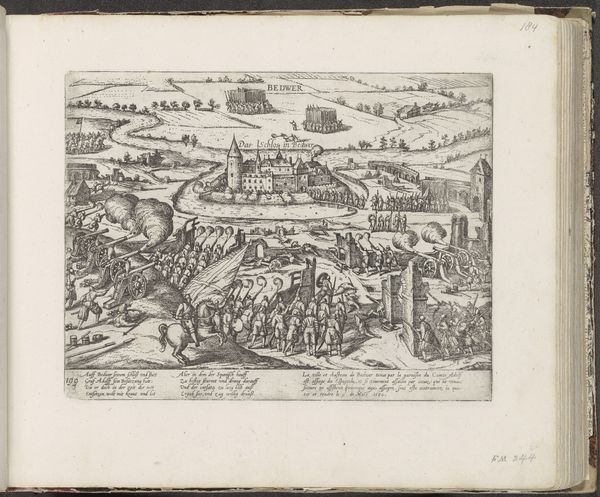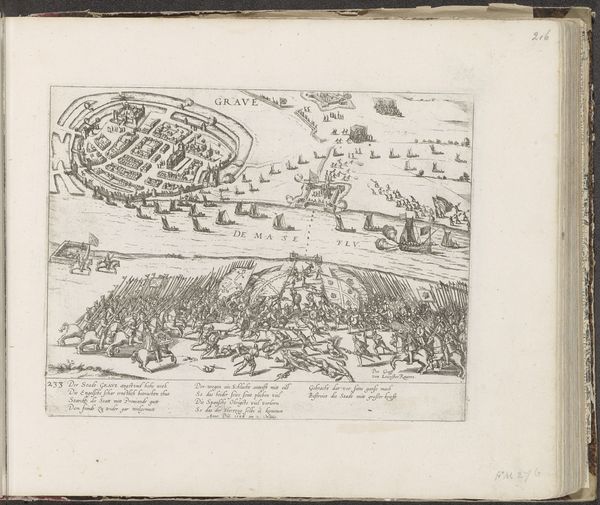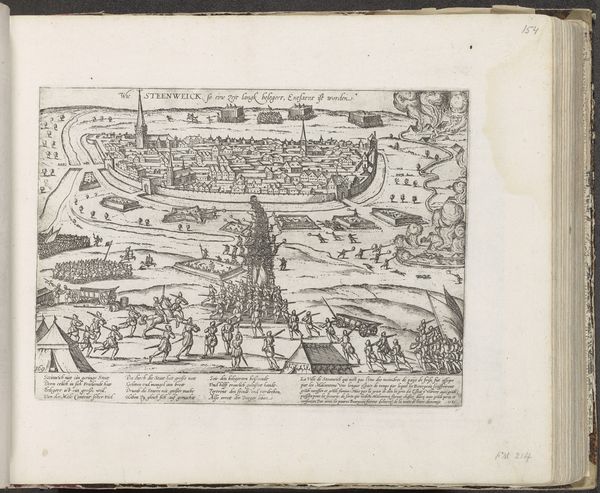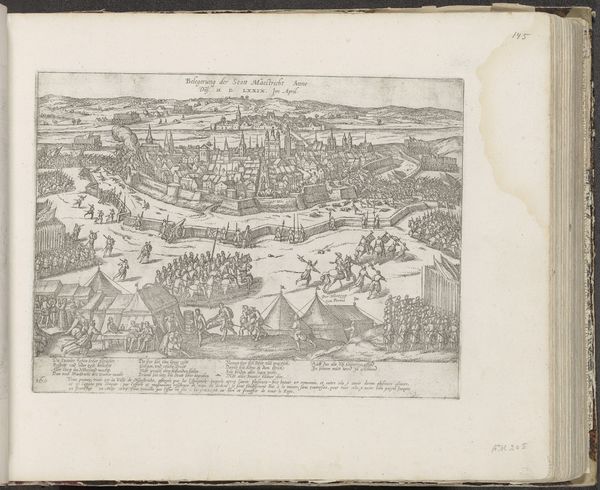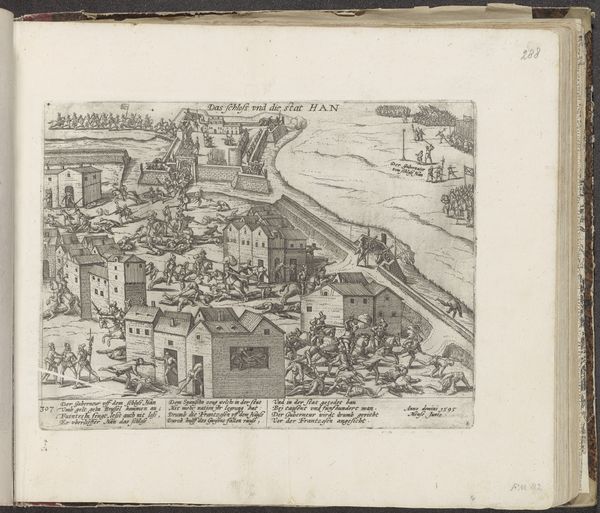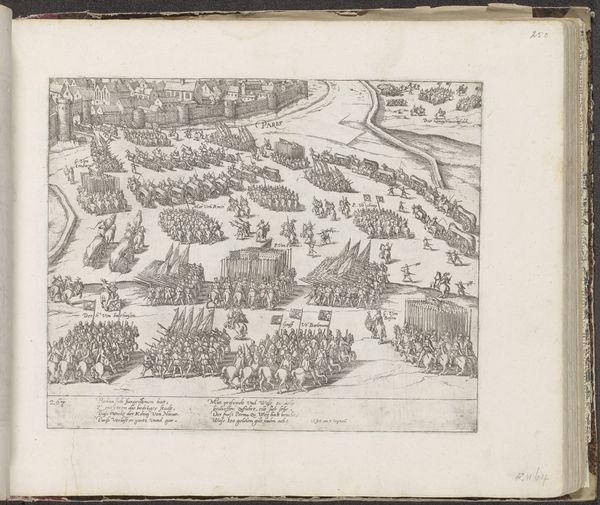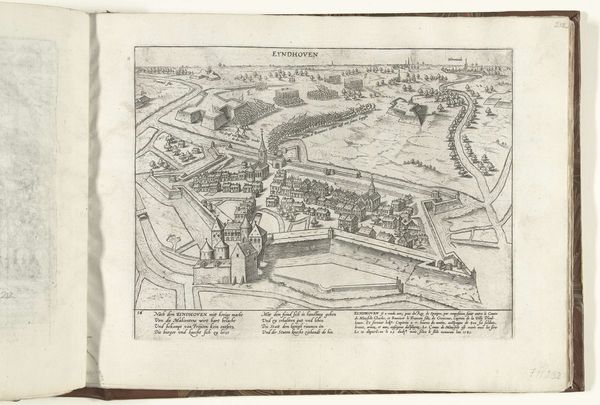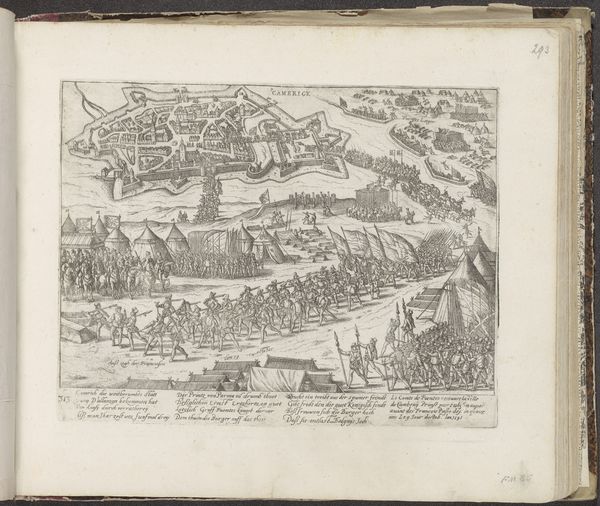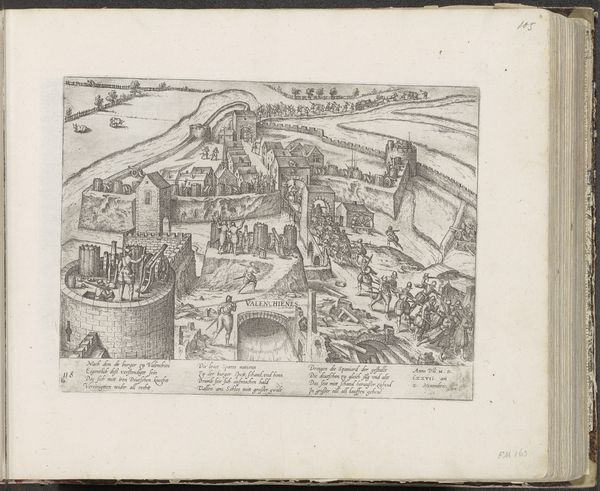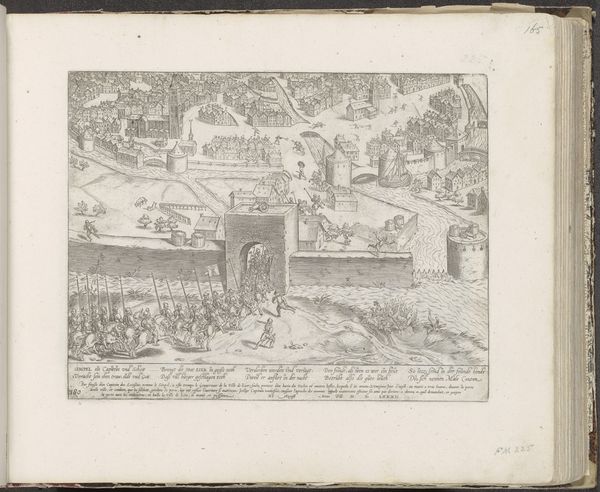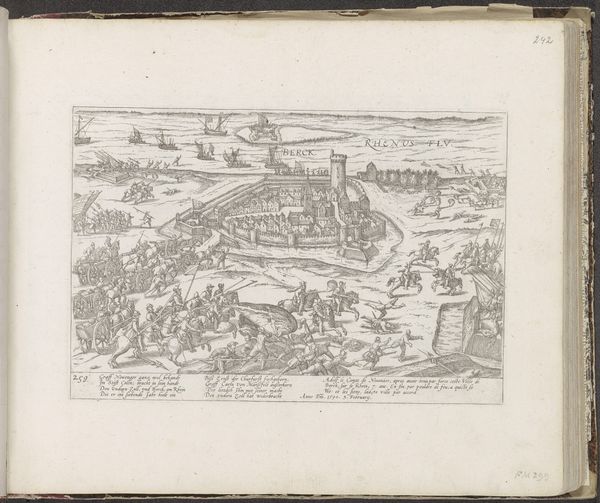
print, etching, engraving
#
medieval
#
pen drawing
# print
#
etching
#
old engraving style
#
landscape
#
history-painting
#
engraving
Dimensions: height 214 mm, width 281 mm
Copyright: Rijks Museum: Open Domain
Curator: The Rijksmuseum holds this print titled “Slag op de Witte Berg bij Praag, 1620” made by Frans Hogenberg between 1620 and 1622. It’s a detailed engraving, almost like a bird's-eye view of a battle. Editor: Yes, it’s incredibly detailed! What strikes me is how seemingly organized the chaos of war appears, almost clinical. What do you see when you look at this piece? Curator: This isn't just a depiction of a battle; it's a document deeply embedded in the power struggles of the 17th century. The Battle of White Mountain was a key event in the Thirty Years' War, a conflict fuelled by religious and political tensions. Hogenberg, through this print, isn't merely recording history; he's shaping the narrative. Consider the perspective: who benefits from portraying this event in such an orderly, decisive manner? Editor: You're suggesting the artist had a particular bias? Perhaps trying to legitimize the victors? Curator: Precisely! Think about the context. This battle solidified Habsburg dominance and suppressed Bohemian Protestantism. Visual culture at the time played a vital role in constructing and reinforcing ideologies. How does Hogenberg use composition, line, and detail to convey a specific message about power and order? Is it to be believed? Editor: The winning army looks much more regimented and the composition is neater on their side. Was Hogenberg perhaps commissioned? Curator: Possibly. And, whether commissioned or not, the act of selecting what to depict, what to emphasize, makes the artwork an ideological statement. We are seeing through the artist’s carefully crafted lens a specific reading of that historical moment. What do you think this teaches us about the role of art in shaping collective memory? Editor: I see now, it's more than just an image of a battle, but also the artist's interpretation, perhaps even a form of propaganda! I'll definitely view similar historical artworks with a more critical eye from now on. Curator: Indeed, questioning the artist’s perspective encourages dialogue between art history and contemporary critical thought.
Comments
No comments
Be the first to comment and join the conversation on the ultimate creative platform.
